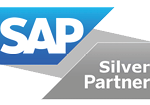Integrating advanced talent intelligence practices is becoming increasingly essential for modern organizations looking to achieve sustainable growth and long-term success. In today’s business environment, harnessing the power of strategic workforce planning and workforce analytics can help companies not only anticipate future talent needs but also ensure HR data-driven decisions are central to business strategies.
This blog will explore how a sophisticated approach to organizational talent strategy enhances workforce planning, improves employee retention, and aligns overall talent management with business objectives. By focusing on the use of SAP SuccessFactors, Boomi, Accenture Software and SkillSoft, organizations can effectively harness leading technology tools that support these endeavors. We’ll examine the benefits of data-driven decisions, the critical role of analytics, and provide actionable insights for creating better long-term outcomes.
Understanding Talent Intelligence as a Foundation for Organizational Success
Talent intelligence refers to the systematic and technology-enabled process of gathering, analyzing, and acting on workforce data to inform key HR initiatives. For organizations aiming to thrive in today’s marketplace, talent intelligence is not merely a feature but a strategic imperative underpinning workforce success. With a robust talent intelligence framework, business leaders gain visibility into workforce skills, abilities, and potential gaps. Leveraging platforms like SAP SuccessFactors empowers businesses to centralize data, creating unified employee profiles and actionable dashboards. These tools facilitate an organizational talent strategy that aligns individual growth with overarching company goals, helping to identify future leaders, pipeline critical roles, and maintain a healthy succession strategy. Relying on guesswork or outdated methodologies can lead to mismatches between business requirements and workforce capabilities, ultimately impacting productivity and retention. A forward-thinking strategy integrates real-time data insights to provide better talent management and organizational agility, keeping decision-makers informed and strategies relevant.
Strategic Workforce Planning: The Backbone of Sustainable Growth
Strategic workforce planning is an ongoing process that ensures organizations have the talent necessary to meet evolving business demands. By anticipating workforce shifts, adapting hiring strategies, and investing in development programs, leaders can proactively manage change instead of reacting to talent shortages or excesses. Solutions such as SAP SuccessFactors and Accenture Software offer comprehensive features that streamline strategic workforce planning, from headcount forecasting to skills gap analysis. With built-in analytics, these platforms support HR data-driven decisions, allowing leaders to align talent acquisition, development, and succession with organizational objectives. Workforce analytics, powered by Boomi’s integration capabilities, transform scattered data points into cohesive insights. Organizations can forecast workforce needs, monitor employee performance trends, and optimize resource allocation for both current and future projects. In turn, this approach not only improves operational efficiency but also builds organizational resilience, enabling a rapid yet sustainable response to market shifts or new opportunities.
Applying Workforce Analytics for Better Talent Outcomes
Workforce analytics goes beyond basic reporting by uncovering meaningful trends and patterns within HR data. A well-implemented analytics approach allows organizations to answer complex questions that drive business performance, such as where high performers are sourced, why attrition rates spike in specific departments, or which skills are most at risk of becoming obsolete. Combining Boomi for integration and Accenture Software for customizable analytics ensures that businesses can convert siloed data into comprehensive, actionable intelligence. Analytics platforms integrated with SAP SuccessFactors further enhance visibility into employee lifecycles, from onboarding through development to retention. Prioritizing workforce analytics in the organizational talent strategy enables identification of high-potential employees, streamlines promotion or reskilling initiatives, and provides benchmarks for continuous improvement. Moreover, HR data-driven decisions derived from analytics often correlate with improved employee outcomes, lowered churn, and reduced hiring costs. These measurable benefits are essential for demonstrating the return on investment in talent intelligence systems.
Enhancing Employee Retention Through Targeted Development Initiatives
Employee retention remains one of the most impactful components of a long-range talent management approach. High turnover rates are frequently costly and disruptive, often resulting from a mismatch between employee aspirations, growth opportunities, and company support. Incorporating SkillSoft into the HR technology ecosystem enables tailored learning and development pathways that meet the specific needs of both the organization and its workforce. By integrating SkillSoft with SAP SuccessFactors, organizations can automate skill assessments, recommend targeted courses, and set personalized development goals. This not only addresses current skills gaps but also prepares employees for future roles, strengthening succession pipelines. Workforce analytics support these efforts by measuring learning effectiveness and correlating training investment with performance outcomes. HR data-driven decisions ensure resources are allocated to the most impactful learning initiatives, optimizing employee engagement and loyalty. Organizations with strong development cultures are more agile, resilient, and attractive to high-value talent, driving long-term organizational success.
Aligning Organizational Talent Strategy with Long-Term Business Objectives
For talent strategies to deliver sustainable results, they must be in lockstep with broader business goals. Effective organizational talent strategy involves aligning workforce planning, recruitment, and development with market expansion, technology adoption, or operational efficiency targets. Solutions like SAP SuccessFactors, Boomi, Accenture Software, and SkillSoft allow companies to design, implement, and measure talent strategies that reflect business priorities. Workforce analytics offer ongoing, real-time feedback on progress toward key metrics such as diversity, leadership readiness, or innovation capacity. HR data-driven decisions enable business leaders to refine strategies when metrics deviate from desired outcomes. Integrating talent management technology within the business planning process makes it possible to anticipate workforce needs as the company grows or pivots. Companies that synchronize talent and business objectives can quickly capitalize on new opportunities, mitigate risk, and maintain a consistent trajectory toward long-term success.
Implementing Data-Driven HR Decisions for Greater Agility
Making HR decisions based on reliable data significantly enhances organizational agility and responsiveness. Leveraging integrated platforms like SAP SuccessFactors and Boomi, along with analytics from Accenture Software, ensures that decision-makers can access accurate, timely information across all HR domains. HR data-driven decisions minimize guesswork in hiring, development, and retention strategies, instead grounding choices in empirical evidence. By establishing key performance indicators that align with business objectives, leaders can continually assess the effectiveness of their talent management initiatives. Data insights highlight areas for improvement and surface best practices that drive ongoing performance enhancements. Regularly updated data also keeps strategies aligned with fast-moving industry changes or regulatory shifts. This evidence-based approach to HR decision-making fortifies an organization’s ability to pivot as needed, ensuring business continuity and long-term resilience, while maximizing both productivity and workforce potential.
Achieving seamless talent intelligence requires a unified technology stack that ensures data consistency and process integration from recruitment through retirement. Organizations benefit from combining SAP SuccessFactors for core HR management, Boomi for secure data integration, Accenture Software for analytics and customization, and SkillSoft for learning and skills development. This configuration not only supports internal efficiency but also enhances the employee experience through transparent, user-friendly processes. Data flows freely between platforms, eliminating redundancies while ensuring managers and HR professionals have access to trustworthy information. Strategic workforce planning is more effective when all systems contribute to a single source of truth, improving accuracy and reducing errors. Regular system updates and feature enhancements support ongoing innovation, while workforce analytics provide the insights necessary to optimize processes at every stage of the employee lifecycle. The result is a culture of data-driven decision-making that enables sustained growth and adaptability regardless of future business scenarios.




